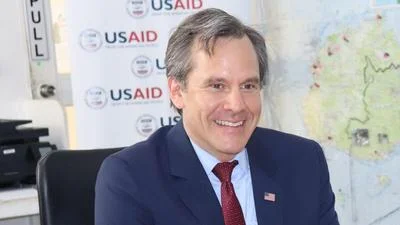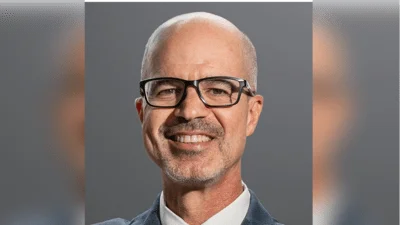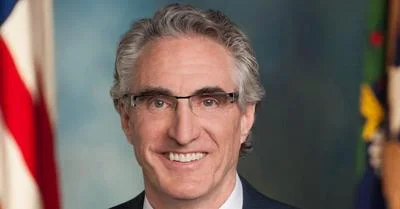SULPHUR, OK- Top regional officials of the National Park Service (NPS) met with leaders of the Chickasaw Nation in late June to explore new forms of collaboration between the tribe and Chickasaw National Recreation Area, which the Park Service manages and oversees.
During the June 26-27 meetings, NPS and tribal leaders discussed proposals to link national park and tribal interests at the Chickasaw Nation's facilities near the national park. Topics of interest included "co-location" of park staff in a tribal visitor center now under construction in Sulphur, gateway community to the national recreation area, and construction of a proposed bridge over Rock Creek from the tribe's Chickasaw Cultural Center "campus" to the park.
"Given that the relationship between the park and the Chickasaw Nation is more than a century old, the concept of close cooperation between the park and the tribe is just a natural thing," said John Wessels, director of the NPS's Intermountain Region (IMR), whose eight states include Oklahoma. (The 91-park region, largest in the Park Service, extends from the Canadian border to the Mexican border.) "On behalf of the National Park Service, I look forward to deepening and continuing the long and fruitful relationship we have enjoyed with the Chickasaw Nation."
Wessels and IMR Deputy Director Colin Campbell traveled to Oklahoma June 26 from their offices in Denver to meet with Chickasaw Nation Governor Bill Anoatubby and other officials at the tribal headquarters in Ada, about 30 miles from the park. The next day, June 27, they toured the tribe's new projects in Sulphur with Chickasaw Nation dignitaries, led by Neal McCaleb, ambassador-at-large for the tribe. Those facilities include the tribal visitor center and The Artesian, a new hotel that celebrated its grand opening on August 2nd.
In a subsequent meeting with park employees that day, Wessels affirmed that all Park Service staff in Sulphur will continue to remain under NPS employment.
The consultation with the Chickasaw Nation was the latest in a series of meetings since 2009, when the tribe expressed interest in sharing in the management of the national park. The Indian Self Determination and Education Assistance Act provides for negotiation between American Indian tribes and the Department of the Interior, which includes the Park Service. Wessels said the discussions are not at the stage of agreement for direct shared management. But he noted many common interests between the park and the Chickasaw Nation that make a close working relationship very desirable and productive.
To that end, Wessels assigned Bruce Noble, superintendent of Chickasaw National Recreation Area and Oklahoma state coordinator for NPS, to explore stationing park staff in the tribe's new visitor center. Wessels also expressed support for construction of a foot and bicycle bridge from the tribe's 109-acre cultural center complex to the park. Finally, Wessels welcomed the opportunity for the park and tribe to exchange interpretive programs so NPS can share Chickasaw Nation information and history with national park visitors. At the same time, NPS can communicate its resource protection and visitor education messages to visitors to the tribal facilities.
Close relations between the national park and the Chickasaw Nation pre-date even the establishment of the National Park Service in 1916. On July 1, 1902, the U.S. Congress approved a supplement to the Atoka Agreement with the Chickasaw and Choctaw Nations. Additional wording endorsed by the two tribes authorized creation of a protected area that included some of Sulphur's natural springs and streams. This allowed the federal government to purchase land from the tribes for what became known as the "Sulphur Springs Reservation." Four years later, Congress passed legislation to convert the reservation into Platt National Park, the seventh-oldest park in what today is the National Park System. In 1976, the park was re-designated Chickasaw National Recreation Area, which lies inside the original historical boundaries of the Chickasaw Nation.
Source: U.S. Department of the Interior, National Park Service





